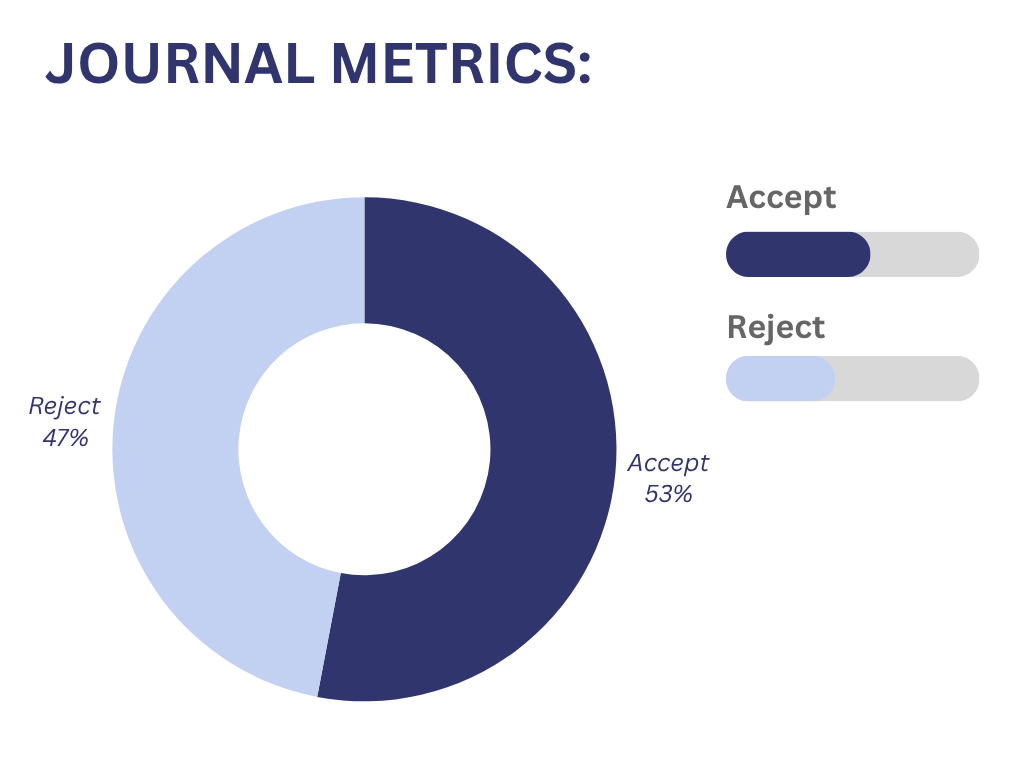Recent Trends and Applications of Linear Programming in Network Flow: A Comprehensive Survey
Abstract
By leveraging advanced techniques and models, Operations Research (OR) provides critical insights and strategic interventions across multiple domains, including transportation, communication, project management, and supply chain optimization. The field's multifaceted approach continues to drive efficiency and innovation in numerous industries. This paper thoroughly evaluates numerous approaches and methods researchers employ to model and investigate problems. Our objective is to bridge gaps in existing literature by examining recent advancements in this field. Network flow problems encompass the shortest path, maximal cost flow, and minimal cost flow problems. These critical elements are essential for understanding transportation dynamics, communication, and resource allocation networks. Furthermore, we explore real-life scenarios where these network flow problems arise, shedding light on their practical significance.
Keywords:
Operational research, Network flow, Linear programming problem, Minimum cost flowReferences
- [1] Churchman, C. W., Ackoff, R. L., & Arnoff, E. L. (1957). Introduction to operations research. Introduction to operations research. Wiley, pp. 645. https://psycnet.apa.org/record/1957-05210-000
- [2] Dey, A., Kumar, R., & Broumi, S. (2022). The neutrosophic traveling salesman problem with neutrosophic edge weight: formulation and a genetic algorithm. International journal of neutrosophic science (IJNS), 19(3), 40–46. DOI: 10.54216/IJNS.190304
- [3] Dubey, A., & Kumar, R. (2024). Recent trends and advancements in inventory management. EAI endorsed transactions on scalable information systems, 11(2). DOI: 10.4108/eetsis.4543
- [4] Dantzig, G. B., Blattner, W. O., & Rao, M. R. (1966). Finding a cycle in a graph with minimum cost to time ratio with application to a ship routing problem. Defense technical information center, New York, 77–84. DOI: 10.21236/ad0646553
- [5] Arisawa, S., & Elmaghraby, S. E. (1972). Optimal time-cost trade-offs in GERT networks. Management science, 18(11), 589–599. DOI: 10.1287/mnsc.18.11.589
- [6] Tripathi, S. K., & Kumar, R. (2023). A short literature on linear programming problem. EAI endorsed transactions on energy web, 10(1). DOI: 10.4108/ew.4516
- [7] Tripathi, S. K., & Kumar, R. (2024). A short literature on linear programming problem under uncertainty. In Data-driven modelling with fuzzy sets (pp. 165–176). CRC Press. DOI: 10.1201/9781003487029-8
- [8] Tripath, S. K., Dey, A., Broumi, S., & Ranjan, K. (2024). Exploring neutrosophic linear programming in advanced fuzzy contexts. Neutrosophic sets and systems, 66(1), 170–184. http://fs.unm.edu/nss8/index.php/111/article/download/4373/1908
- [9] Tripathi, S. K., Kumar, R., & others. (2023). A review of neutrosophic linear programming problems under uncertain environments. Full length article, 21(4), 94. DOI: 10.54216/IJNS.210410
- [10] Pratyusha, M. N., & Kumar, R. (2024). A comparative study on critical path method and project evaluation and review technique in construction under uncertain environment. In Data-driven modelling with fuzzy sets (pp. 150–164). CRC Press. DOI: 10.1201/9781003487029-7
- [11] Navya Pratyusha M, R. K. (2023). Critical path method and project evaluation and review technique under uncertainty: a state-of-art review. International journal of neutrosophic science (IJNS), 21(03), 143–153. DOI: 10.54216/IJNS.210314
- [12] Dey, A., Broumi, S., Kumar, A Ranjan, & Pratyusha, N. (2024). Critical path method & project evaluation and review technique: a neutrosophic review. Neutrosophic sets and systems, 67, 135–146. https://fs.unm.edu/nss8/index.php/111/article/view/4421/1917
- [13] Pratyusha, M. N., & Kumar, R. (2024). Enhancing critical path problem in neutrosophic environment using Python. Computer modeling in engineering & sciences, 140(3), 2957–2976. DOI: 10.32604/cmes.2024.051581
- [14] Secretariat, B. A. P., & Pradesh, A. (2024). Solving neutrosophic critical path problem using Python. Journal of information & optimization sciences, 45(4), 897–911. DOI: 10.47974/JIOS-1614
- [15] Dubey, A., Kumar, R., & others. (2023). Extended uncertainty principle for inventory control: an updated review of environments and applications. International journal of neutrosophic science, 21(4), 8. DOI: 10.54216/IJNS.210401
- [16] Dubey, A., Dey, A., Broumi, S., Kumar, R. (2024). A survey on neutrosophic principles for inventory management problem. Neutrosophic sets and systems, 68(1), 19. https://digitalrepository.unm.edu/cgi/viewcontent.cgi?article=2666&context=nss_journal
- [17] Dubey, A., Koumar, R. (2024). Inventory model with sensitivity analysis under uncertain environment. Journal of information and optimization sciences, 24(4), 1081–1092. DOI: 10.47974/JIOS-1693
- [18] Lapidoth, A., & Moser, S. M. (2003). Capacity bounds via duality with applications to multiple-antenna systems on flat-fading channels. IEEE transactions on information theory, 49(10), 2426–2467. https://moser-isi.ethz.ch/docs/papers/alap-smos-2003-3.pdf
- [19] Fu, G. Z., Huang, H. Z., Li, Y. F., & Zhou, J. (2021). An adaptive hybrid evolutionary algorithm and its application in aeroengine maintenance scheduling problem. Soft computing, 25, 6527–6538. DOI: 10.1007/s00500-021-05647-y
- [20] Razavi Hajiagha, S. H., Akrami, H., & Sadat Hashemi, S. (2012). A multi-objective programming approach to solve grey linear programming. Grey systems: theory and application, 2(2), 259–271. DOI: 10.1108/20439371211260225
- [21] Zhu, H., Liu, D., Zhang, S., Zhu, Y., Teng, L., & Teng, S. (2016). Solving the many to many assignment problem by improving the Kuhn-Munkres algorithm with backtracking. Theoretical computer science, 618(7), 30–41. DOI: 10.1016/j.tcs.2016.01.002
- [22] Simaiakis, I., & Balakrishnan, H. (2016). A queuing model of the airport departure process. Transportation science, 50(1), 94–109. DOI: 10.1287/trsc.2015.0603
- [23] Dantzig, G. B. (2002). Linear programming. Operations research, 50(1), 42–47. DOI: 10.1287/opre.50.1.42.17798
- [24] Singaravelan, A., Kowsalya, M., Ram, J. P., Gunapriya, B., & Kim, Y. J. (2021). Application of two-phase simplex method (TPSM) for an efficient home energy management system to reduce peak demand and consumer consumption cost. IEEE access, 9, 63591–63601. DOI: 10.1109/ACCESS.2021.307268
- [25] Rusin, M. H. (1971). A revised simplex method for quadratic programming. SIAM journal on applied mathematics, 20(2), 143–160. DOI: 10.1137/0120019
- [26] József, Abaffy. Szabina, F. (2013). Solving integer and mixed integer linear problems with ABS method. Acta polytechnica hungarica, 10(7), 81–98. http://efolyoirat.niif.hu/02400/02461/00045/pdf/EPA02461_acta_polytechnica_hungarica_2013_07_081-098.pdf
- [27] Chopra, S., Notarstefano, G., Rice, M., & Egerstedt, M. (2017). A distributed version of the hungarian method for multirobot assignment. IEEE transactions on robotics, 33(4), 932–947. DOI: 10.1109/TRO.2017.2693377
- [28] Darvishi Salookolaei, D., & Nasseri, S. H. (2020). A dual simplex method for grey linear programming problems based on duality results. Grey systems: theory and application, 10(2), 145–157. DOI: 10.1108/GS-10-2019-0044/full/html
- [29] Ghatee, M., & Hashemi, S. M. (2007). Ranking function-based solutions of fully fuzzified minimal cost flow problem. Information sciences, 177(20), 4271–4294. DOI: 10.1016/j.ins.2007.05.007
- [30] Tripathi, S., & Kumar, R. (2024). Solving neutrosophic minimal cost flow problem using multi-objective linear programming problem. Journal of information and optimization sciences, 45, 1093–1104. DOI: 10.47974/JIOS-1694
- [31] Ebrahimnejad, A., Nasseri, S. H., & Mansourzadeh, S. M. (2013). Modified bounded dual network simplex algorithm for solving minimum cost flow problem with fuzzy costs based on ranking functions. Journal of intelligent & fuzzy systems, 24(1), 191–198. DOI: 10.3233/IFS-2012-0545
- [32] Majumder, S., Saha, B., Anand, P., Kar, S., & Pal, T. (2018). Uncertainty based genetic algorithm with varying population for random fuzzy maximum flow problem. Expert systems, 35(4), e12264. DOI: 10.1111/exsy.12264
- [33] Tripathi, S. K., Nisar, K. S., Broumi, S., Kumar, R., & others. (2024). Efficient neutrosophic optimization for minimum cost flow problems. International journal of neutrosophic science, 25(1), 81. DOI: 10.54216/IJNS.250107



